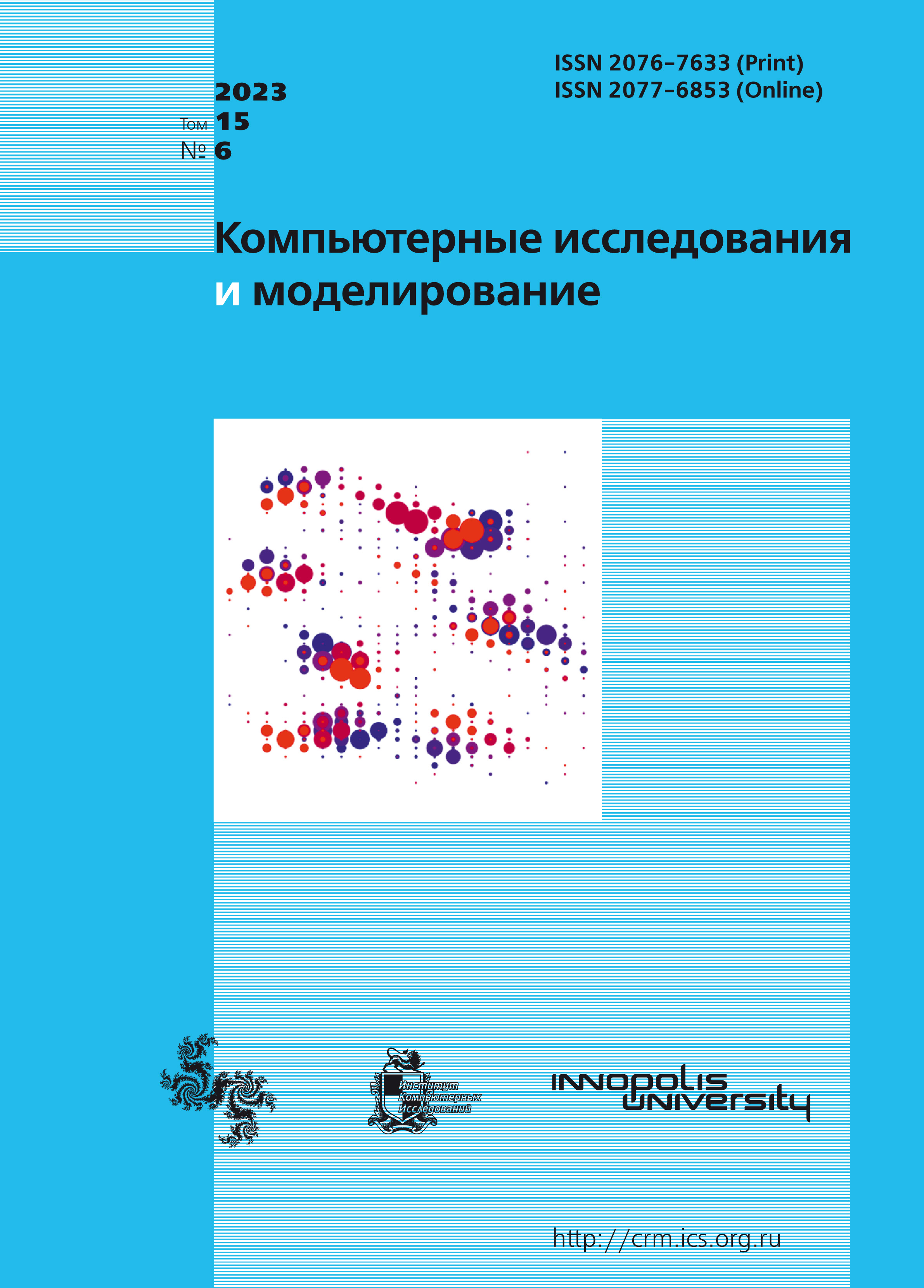All issues
- 2024 Vol. 16
- Issue 1 (special issue)
- 2023 Vol. 15
- 2022 Vol. 14
- 2021 Vol. 13
- 2020 Vol. 12
- 2019 Vol. 11
- 2018 Vol. 10
- 2017 Vol. 9
- 2016 Vol. 8
- 2015 Vol. 7
- 2014 Vol. 6
- 2013 Vol. 5
- 2012 Vol. 4
- 2011 Vol. 3
- 2010 Vol. 2
- 2009 Vol. 1
Pattern formation of a three-species predator – prey model with prey-taxis and omnivorous predator
 pdf (1493K)
pdf (1493K)
The spatiotemporal dynamics of a three-component model for food web is considered. The model describes the interactions among resource, prey and predator that consumes both species. In a previous work, the author analyzed the model without taking into account spatial heterogeneity. This study continues the model study of the community considering the diffusion of individuals, as well as directed movements of the predator. It is assumed that the predator responds to the spatial change in the resource and prey density by occupying areas where species density is higher or avoiding them. Directed predator movement is described by the advection term, where velocity is proportional to the gradient of resource and prey density. The system is considered on a one-dimensional domain with zero-flux conditions as boundary ones. The spatiotemporal dynamics produced by model is determined by the system stability in the vicinity of stationary homogeneous state with respect to small inhomogeneous perturbations. The paper analyzes the possibility of wave instability leading to the emergence of autowaves and Turing instability, as a result of which stationary patterns are formed. Sufficient conditions for the existence of both types of instability are obtained. The influence of local kinetic parameters on the spatial structure formation was analyzed. It was shown that only Turing instability is possible when taxis on the resource is positive, but with a negative taxis, both types of instability are possible. The numerical solution of the system was found by using method of lines (MOL) with the numerical integration of ODE system by means of splitting techniques. The spatiotemporal dynamics of the system is presented in several variants, realizing one of the instability types. In the case of a positive taxis on the prey, both autowave and stationary structures are formed in smaller regions, with an increase in the region size, Turing structures are not formed. For negative taxis on the prey, stationary patterns is observed in both regions, while periodic structures appear only in larger areas.
Indexed in Scopus
Full-text version of the journal is also available on the web site of the scientific electronic library eLIBRARY.RU
The journal is included in the Russian Science Citation Index
The journal is included in the RSCI
International Interdisciplinary Conference "Mathematics. Computing. Education"






